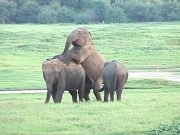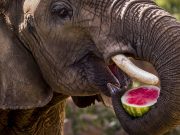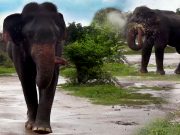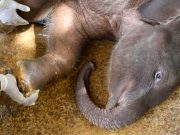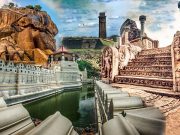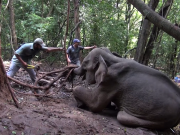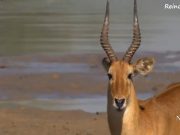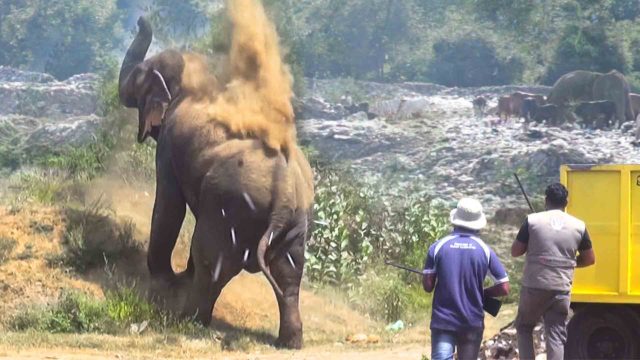We are still in another new mission today.Today we will focus on the diet of elephants..
Elephants eat between 149 and 169 kg of vegetation daily.
Sixteen to eighteen hours, or nearly 80% of an elephant’s day is spent feeding. Elephants consume grasses, small plants, bushes, fruit, twigs, tree bark, and roots.
Tree bark is a favorite food source for elephants. It contains calcium and roughage, which aids digestion. Tusks are used to carve into the trunk and tear off strips of bark.
Elephants require about 68.4 to 98.8 L of water daily, but may consume up to 152 L . An adult male elephant can drink up to 212 L of water in less than five minutes.
To supplement the diet, elephants will dig up earth to obtain salt and minerals. The tusks are used to churn the ground. The elephant then places dislodged pieces of soil into its mouth, to obtain nutrients. Frequently these areas result in holes that are several feet deep and vital minerals are made accessible to other animals. Ex: Over time, African elephants have hollowed out deep caverns in a volcano mountainside on the Ugandan border, to obtain salt licks and minerals. Hills have been carved by Asian elephants in India and Sumatra searching for salt and minerals. These carved areas in the landscape provide valuable food and shelter resources for a diverse array of native wildlife.
Today this has changed because of globalization and urbanization.Nowadays, elephants have a very bad tendency to eat garbage. So today our mission is to save an elephant that eats garbage.
So today we’re going to start like this so you can see the garbage eating elephant we found
and this elephant has been shot.
Becoming addicted to the taste of the food in the garbage, elephants in the surrounding areas completely change their lifestyle and these garbage dumps become their dining table.
When the elephants smell food, it doesn’t matter if it’s covered in polythene, wrapped in a paper or in a plastic vessel; they swallow everything. The waste is then trapped inside the stomachs of the elephants, who have a very sensitive digestive system, and they die a painful death.
In Sri Lanka, more than 300 elephants die a year due to eating garbage like this.
By the way ,You can see that the leg wound of this elephant is fermented and pus is flowing.You can see the bullet marks on his legs.Do you have any idea now how harmful this condition is to elephants?
So our team of wildlife officers is working hard to get rid of them.Now you can see our wildlife officers preparing the equipment needed for this.Now our wildlife officials are preparing to give this elephant antibiotics.they are going use the tranquilizer gun .
A tranquillizer gun capture gun or dart gun, is a non-lethal air gun used to reduce irritability or agitation in animals via anesthetic drugs commonly referred to as tranquilizers. The gun shoots a dart tipped with a hypodermic needle and filled with a dose of tranquilizer solution that is either sedative, comatosing or paralytic. The gun makes it possible for wild animals to be sedated, while domestic animals are sedated in the same manner that humans are.
Wild officers are experienced as well as skilled officers who should be concerned about their safety.
So this elephant looks like a bit of a tough guy.Again and again he covers his body with sand.Elephants gather sand and mud with their trunks and throw it onto their bodies, providing sun protection and repelling bugs.
Elephants use the trunk like a hand in other ways as well. Tool use in elephants involves holding branches and scratching themselves in places that the trunk and tail cannot reach.But here the trunk is used to get the sand.An elephant is throwing sand at his body .
So this is how our wildlife officers end the operation. Nowadays, eating garbage has become a very unfortunate tragedy and a large number of elephant lives have been lost due to extremely tragic deaths.








